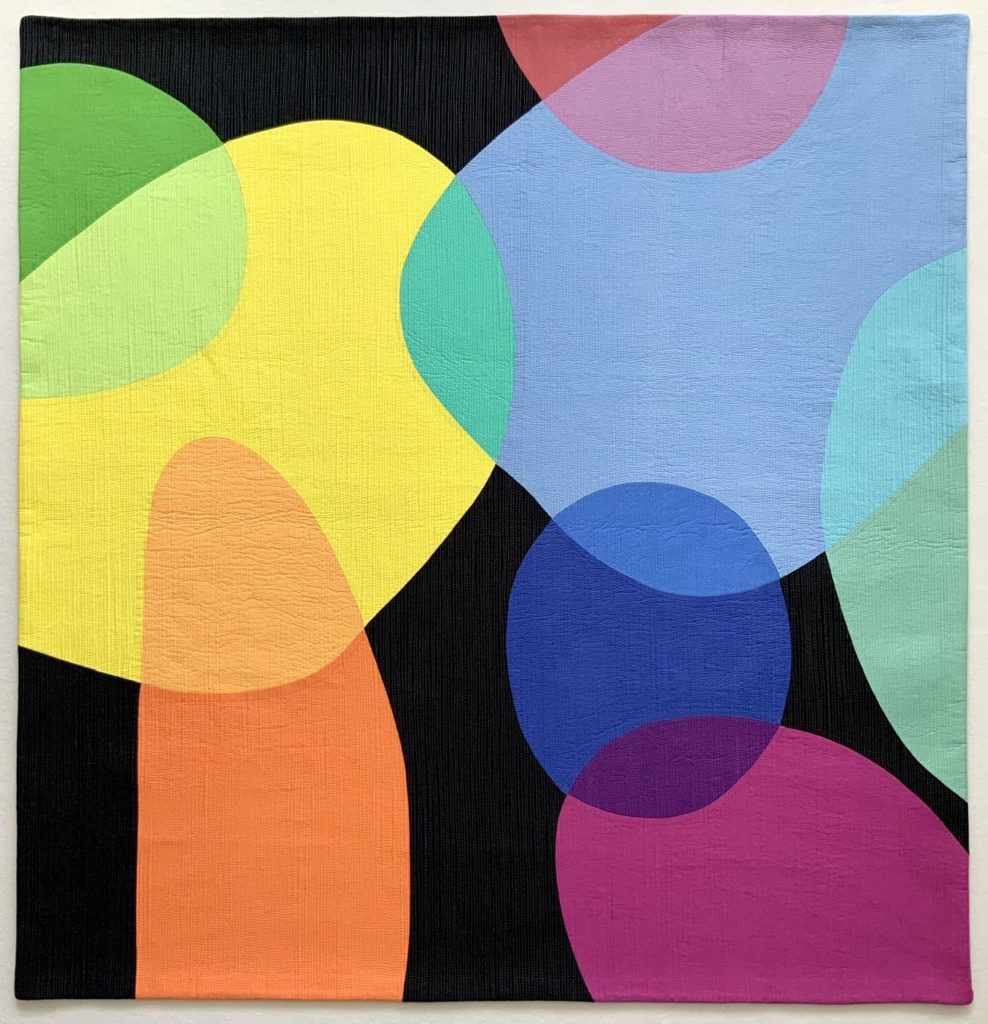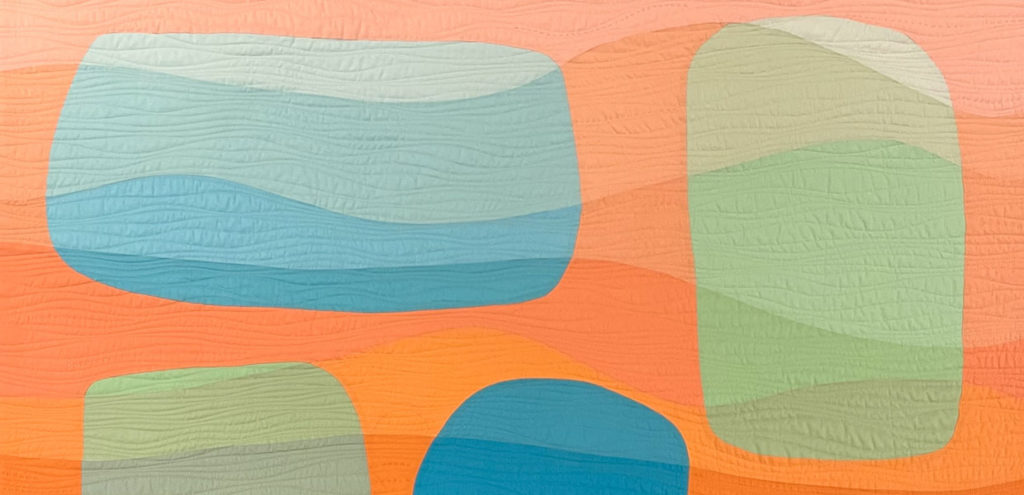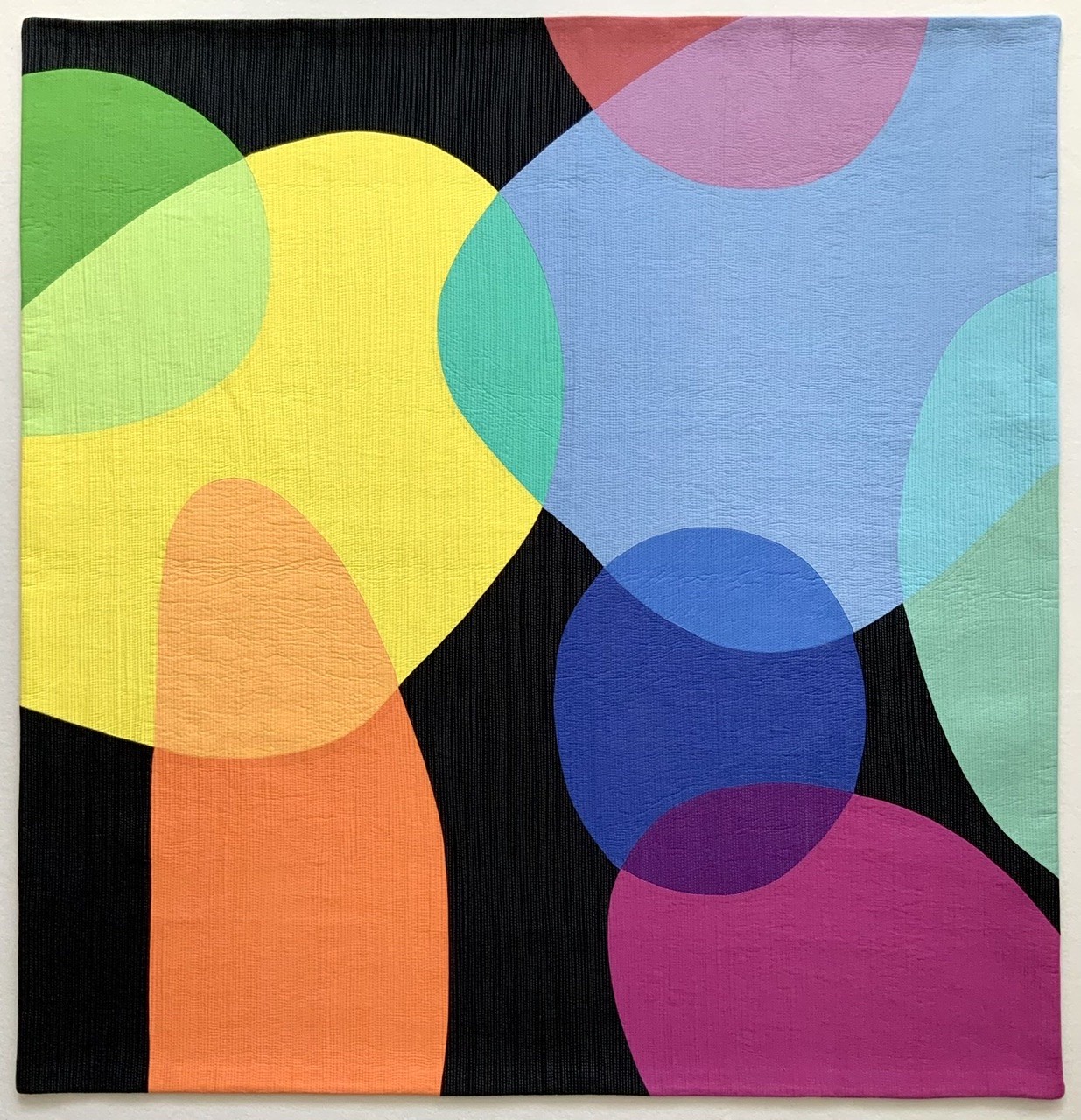There are a wide variety of different ways to create unique shape and color effects in your quilting. One of the ways to create unique color effects in your quilting is to try some of the transparency effects that are created by the interplay of different colors that are next to each other in the color wheel.

Two Different Ways To Create a Transparency Effect
If you are looking to create the transparency effect in your quilts. The first method is to utilize colors that are next to each other in the color wheel. Let’s say that you wanted to create an analogous color scheme. You could look at the color wheel and pick several different colors that are next to each other, such as yellow to reddish orange. Each of these colors have a little bit of the same ingredients, so you can create the transparency effect.
The other way to work with transparency is to utilize one color but use different values of the color. You might have different fabrics with color values that are lighter and darker. These are the two ways to get started with the transparency effect in your quilting.

Learning How To Create Seamless Sensations In Your Quilts
After you learn about how to make two different color schemes, you will learn how to make the colors flow seamlessly in your quilt. Even though you will use the different colors of fabric for each section of your quilt, each color will look as if it flows seamlessly to the next. Some of your shapes will be able to be easily sewed on the sewing machine. The sensation that you will create is that each section of fabric is one part of a much larger organic element. People who look at the quilt won’t be able to tell where each fabric starts and stops because of the relation of the colors.

How Do Curves and Transparencies Help Your Larger Quilting Endeavors?
After taking the Curves and Transparencies quilting course, you will be able to:
- Think about colors more organically and work with them in your larger quilts.
- Grow familiar with some of the techniques used to work with the interplay of colors in your quilt.
- Develop color palettes and layouts that you like that will be uniquely your own.
Color theory will help you create exciting improvisational designs that you can experiment with in your quilting practice. You will also become more comfortable with some of the mechanics of quilting, pinning, and working with your sewing machine to create a final product.


